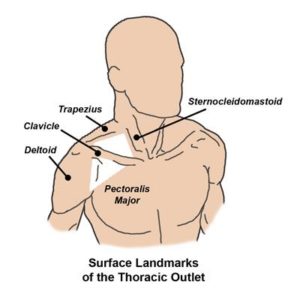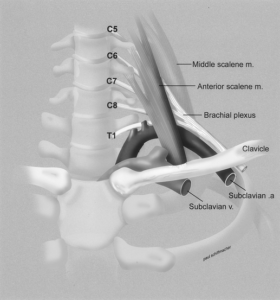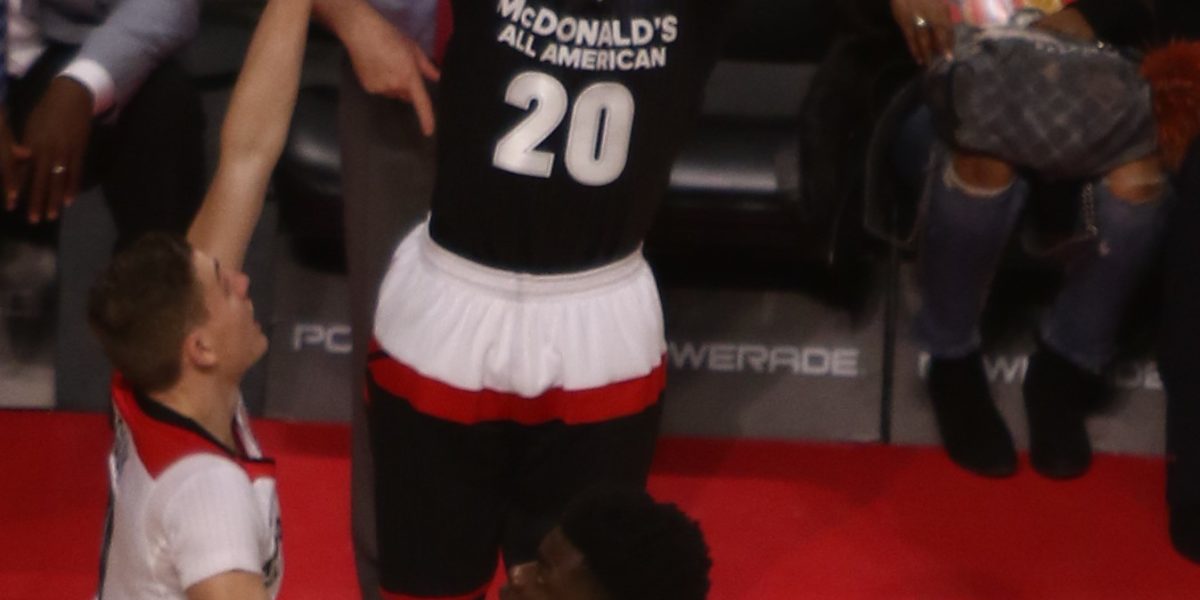What happened to Markelle Fultz? This is the question on the minds of many basketball fans who have watched a promising player slip into a sharp decline in his first two seasons in the NBA. The former 1st pick in the 2017 NBA draft was known in college for his ability to score; however, so far in his career, his shooting statistics have fallen dramatically as he seemingly forgot how to shoot the ball.
A couple of painfully awkward shots can be seen below as Fultz tried new methods of shooting the basketball:
A few months ago, his difficulties were diagnosed as neurogenic thoracic outlet syndrome (TOS). But what is neurogenic TOS and how does it impact Fultz’s shot?

A paper by neurosurgeons Jason Huang and Eric Zager of the University of Pennsylvania on TOS gives insight into Fultz’s diagnosed condition. The thoracic outlet is an intersection of nerves and blood vessels that run through the gaps between the base of the neck, the clavicle, and the arm. Neurogenic TOS occurs when there is compression of the brachial plexus, a bundle of nerves that run between the scalene muscles, the clavicle (or collarbone), and the subclavian arteries. When certain arm motions are performed, the space in the thoracic outlet can become smaller, leading to increased compression.

Particularly in men, it is common for the scalene muscles to cause TOS, and research has shown that it can happen through repetitive use or sports. There have been reports of baseball pitchers diagnosed with TOS because of the awkward arm motions from throwing the ball. Often TOS is accompanied by a dull pain in the neck, shoulders and arm where affected, but is not sharp and is often characterized by discomfort, especially with overhead motions. This would explain why Fultz’s shooting motion could be uncomfortable and cause his brain to focus on the pain caused by the nerve compression.
So what is the treatment and what is Fultz’s timetable for return?
Sometimes for patients with TOS, surgery is an option, but not often for the type Fultz is likely experiencing, since they are tricky and carry high risk due to the presence of major nerves and arteries. Often a more conservative treatment is prescribed, and it seems as though Fultz is doing physical therapy. His initial timetable for return was listed at 3-6 weeks, but there is no indication of an immediate return, and there is little data to predict the length of recovery with physical therapy.
Because of the unpredictability of the treatment, the uncertainty surrounding Fultz seems to be just as thick with the diagnosis of TOS as it was before. However, the ability for Fultz to recover and relearn how to shoot will be imperative in determining whether he will return to his original form as an elite scorer or become one of the biggest busts in the history of the NBA.
Further reading on this topic can be found from The Washington University School of Medicine and In Street Clothes.
Featured image: By TonyTheTiger – Own work, CC BY-SA 4.0 via WikimediaCommons
